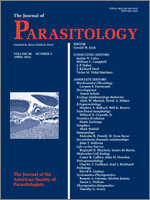Pediculus humanus capitis is an ancient human parasite, probably inherited from pre-hominid times. Infestation appears as a recurrent health problem throughout history, including in pre-Columbian populations. Here, we describe and discuss the occurrence of pre-Columbian pediculosis in the Andean region of the Atacama Desert. Using a light microscope and scanning electron microscopy, we studied a highly infested Maitas Chiribaya mummy from Arica in northern Chile dating to 670–990 calibrated years A.D. The scalp and hair of the mummy were almost completely covered by nits and adult head lice. Low- and high-vacuum scanning electron microscopy revealed a well-preserved morphology of the eggs. In addition, the excellent preservation of the nearly 1,000-yr-old adult head lice allowed us to observe and characterize the head, antennae, thorax, abdomen, and legs. Leg segmentation, abdominal spiracles, and sexual dimorphism also were clearly observed. The preservation of the ectoparasites allowed us to examine the micromorphology using scanning electron microscopy; the opercula, aeropyles, and spiracles were clearly visible. This case study provides strong evidence that head lice were a common nuisance for Andean farmers and herders. Head lice are transmitted by direct head-to-head contact; thus, this ancient farmer and herder was potentially infesting other people. The present study contributes to the body of research focusing on lice in ancient populations.
BioOne.org will be down briefly for maintenance on 12 February 2025 between 18:00-21:00 Pacific Time US. We apologize for any inconvenience.
How to translate text using browser tools
1 April 2012
Severe Head Lice Infestation in an Andean Mummy of Arica, Chile
Bernardo Arriaza,
Nancy C. Orellana,
Helene S. Barbosa,
Rubem F. S. Menna-Barreto,
Adauto Araújo,
Vivien Standen
ACCESS THE FULL ARTICLE

Journal of Parasitology
Vol. 98 • No. 2
April 2012
Vol. 98 • No. 2
April 2012




